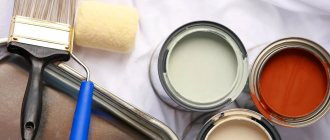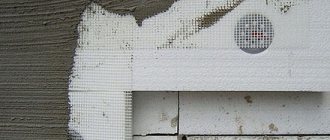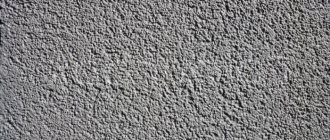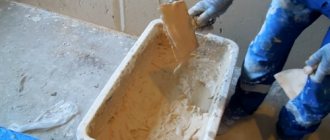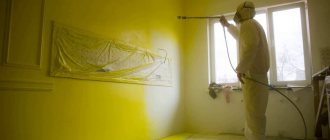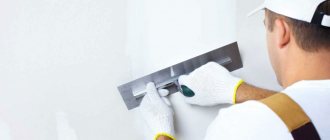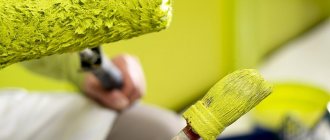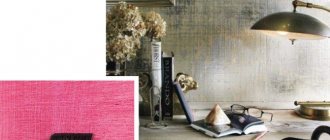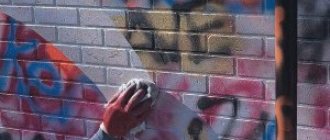Among the many options for decorating a room, coloring continues to be popular. If we talk about dry rooms, then there should be no problems with decorative material. But in rooms such as the kitchen and bathroom, the requirements for paint are much higher. The main nuance is increased moisture inside and the likelihood of water getting on the decorative layer. Not all finishing materials can resist moisture without losing their characteristics.
Therefore, before you paint the walls in the bathroom with your own hands, you need to carefully select the paint material. The durability and security of the walls in the bathroom will depend on this.
How to paint a bathroom
You can paint the walls in the bathroom in different ways. Some choose a combined finishing option - the shower stall or part of the wall near the bathtub is tiled, the rest is painted. In this case, the choice of paints is greater, since many can easily tolerate high humidity, but not all can withstand exposure to hot chlorinated water.
Only part of the walls can be painted in the bathroom
If you categorically do not like tiles, even in limited quantities, you can cheat - decorate the painted walls in the splash zone with glass or transparent polycarbonate sheets.
Painted bathroom walls can be protected with glass or polycarbonate panels
It is not necessary to cover all the walls completely
Designer approach))
Many people still have concerns about whether it is possible to hang a heated towel rail on a painted wall. The answer is yes, there are no restrictions and there will be no consequences either. Read more about what paints you can use to paint bathroom walls.
What paint can be used in the bathroom
Not all paints can be used for wet rooms, and in the case of a bathroom, high cleaning power is still required. The following types are suitable:
- Latex. One of the types of water-based paint. It forms a dense film on the surface, applies well, lasts a long time, but has a high price and requires ideal surface preparation.
- Water-based silicone or acrylic emulsion. These paints are a good choice for painting a bathroom. Medium price range, good resistance to water.
Waterproof bathroom paint can vary - Alkyd enamel. It has a low price, good resistance to water, but is produced on the basis of organic solvents, and therefore has a strong odor. Another disadvantage is that a wall painted with alkyd enamel does not allow air to pass through.
- Oily. Everyone has long known bathroom paint, which is becoming less and less popular - it has a strong smell, does not last long (it begins to peel or swell).
Chlorinated rubber paint is often also recommended. Yes, it creates a waterproof coating, as it was developed for swimming pools. But it can only be used at temperatures not exceeding +27°C. It makes sense to use it in areas exposed to water splashes, since after drying the resulting film is more like rubber than paint and does not allow either water or air to pass through. But there is a high probability that the water will get warmer than necessary. It is not stated how this paint will behave or what it will begin to emit, but it is hardly worth the risk, since its cost is high and the results of application are doubtful.
The combination of tiles and paint in the bathroom is beautiful and practical
As you can see, there is a choice, but there is no ideal option. Every place has its downsides. In general, any serious manufacturer has bathroom paint, and often more than one. If there is no direct indication that it is intended for the bathroom and kitchen, then it is written “washable” and “waterproof” or “moisture resistant.” When choosing, pay attention to the number of brush passes (should also be written). This figure is measured in thousands and the larger it is, the better. The minimum for walls is 3000 passes, but most good compositions exceed this figure many times over. For example, Livna “PS-285” can withstand 20,000 passes with a soft brush. That is, in terms of characteristics it is close to Tikkurila, but costs several times less.
Adviсe
Competent advice from professionals will help you create an interesting bathroom design using paints.
Certain subtleties should be taken into account in the work.
An original effect is obtained by alternating tiles with paint. With this solution, the design of the room becomes unusual and interesting. Painting can be done in rooms with good ventilation. Only if this rule is followed will the interior retain its attractiveness for a long time
Periodically, you need to open the door and ventilate the room so that drier air masses enter the room. Before the painting process, pay attention to the corners of the room. They must not contain any defects or blemishes.
Any imperfections will be visible to the naked eye under a layer of paint.
- Before purchasing paint, you need to make sure that it is intended for painting a bathroom. If such information is not present on the product packaging, most likely the paint is not suitable. Specialized formulations contain mold inhibitors, thanks to which the coating will not be affected by dampness.
- Washable paints are the best option for such premises. Information about this should also be present on the packaging. Such materials are easy to care for. Using ordinary detergents, you can remove yellowness and other dirt from the surface of the walls.
- When painting, you should cover the sink, the corners of the bathroom, and the floor surface with tape or newspapers so as not to stain it.
- Designers do not recommend painting the entire room with paint. Places where water often gets in (the floor surface, the area near the shower stall, sink) are best lined with tiles or plastic panels.
Latex paint: characteristics
Latex can be natural or synthetic. Latex paints are made on the basis of natural latex - the juice of rubber plants. These particles are dissolved in water and do not form rigid bonds. As the water dries, an elastic, waterproof film forms on the surface. Its advantages are:
- Easy to apply.
- Dries quickly.
- Almost odorless.
- Abrasion resistant coating.
- Durable.
- Easy to clean.
- Can be tinted with various pigments.
The paint is applied with a roller or brush. For normal staining, it is advisable to apply 2 layers. To reduce paint consumption, it is advisable to pre-prime the surface.
Some brands of latex bathroom paint
There are also disadvantages:
- In order for the paint to look good, the walls need to be perfectly prepared - a thin film will highlight all the imperfections.
- Not suitable for unheated rooms. Lower temperature threshold +10°C.
- Before painting, the walls must be treated with antifungal compounds.
- High price.
Mostly, latex bathroom paint is not purchased because of the high price. If you look at the price per liter, it is. But we must take into account that the consumption of this paint is very small, so you will need to buy a small amount. The second point that must be taken into account is that the painted surface does not change its appearance for a long time. Literally nothing has happened to her for years. So “expensive” is relative.
One more thing: if you want to have a “silky” shine on your bathroom walls, you need latex paint. No other product gives this effect.
Painting walls - step by step instructions
The easiest way is to paint the walls one color. To prevent the product from getting on the ceiling and other surfaces that cannot be painted, they are protected with masking tape.
After this, perform the following steps:
- The paint is mixed until a homogeneous consistency is obtained. The film that appears on the surface is removed, trying to prevent its particles from getting into the composition.
- The finishing material is tinted. Pigment is gradually poured into the container with the water-based solution, stirring the product with a mixer. When the color becomes uniform, add the remaining color. The solution is stirred again. When using oil paints, this step is skipped.
- Paint corners and hard-to-reach places with a narrow brush. The paint is rubbed in, removing stains and drips. The tool must move in one direction.
- Use a roller or wide brush to paint large surfaces. Do not completely immerse the instrument in paint. The roller is rolled out onto a relief tray, removing excess finishing material. The coloring agent is applied in even stripes from top to bottom. Painted walls are allowed to dry for 6-36 hours.
- Carry out the procedure again, after which the masking tape is removed. This stage can be postponed to a later period, but it is advisable to complete it immediately. If the painted walls have stripes or stains, apply a third layer of finishing product.
Acrylate (acrylic or polyacrylic)
Acrylate is one of the types of latex paint. One of the types of synthetic rubbers is used as a base - acrylate, which is why the composition got its name. The properties of acrylic paint for the bathroom can be called optimal:
- A weak and unstable odor when drying and its complete absence after.
- Moisture resistance. When water hits a dry surface, nothing happens. Dried acrylic does not dissolve and does not enter into any reactions.
- Vapor permeability. The dried composition does not interfere with gas exchange.
- Good adhesion (adhesion to the surface to be painted).
- Can be used at high and low temperatures. If you are looking for waterproof bath paint, this is a good choice.
- Does not fade when exposed to ultraviolet light.
- High abrasion resistance. Anti-vandal coatings are made from acrylic paints.
- Safety. Does not contain heavy metal salts or organic solvents.
- No noticeable odor.
If you need a bright and deep color, acrylic paint for the bathroom is your choice. Moreover, this color lasts for a very long period of time. An additional bonus is the versatility of the composition: it can be applied to concrete, metal, glass, stone, plastic, brick, plaster.
Acrylic paint for the bathroom is a wonderful solution to the problem
The disadvantages of acrylic paint are also worth knowing:
- Long drying time.
- Low dry residue (about 30%), which means that the film is thin and requires good surface preparation.
- Only acrylic paint goes on top of acrylic paint. If you want to change it, you will have to completely remove it.
Overall, acrylic bathroom paint is a good choice. Painted bathroom walls will retain their color for a long time.
Preparatory work
To ensure that painted surfaces look beautiful and retain their original appearance for a long time, you need to do some preparatory work. They come down to preparing tools and materials and processing the base.
Required tools and materials
Simple and common equipment and materials are suitable for painting. Among them:
- A set of brushes of different thicknesses.
- Cellophane film.
- Roller.
- Primer solution.
- Solvent.
- Varnish.
- LMB.
- Masking tape.
- Palette.
Surface preparation
At the preparation stage, you must first thoroughly wash the tile surface. Then you need to inspect the tiles and tile seams for defects. If they are present, they should be sealed with moisture-resistant grout. Now you need to completely get rid of the glossy layer on the ceramic by grinding and clean the surface of dust. Next, you should degrease the coating and cover with film or seal with masking tape those surfaces that do not need to be painted. The next step is to prime the base to increase adhesion.
Before painting, you must carefully prepare the surface.
Silicone water dispersion
Silicone paint, as well as latex and acrylic, are water-based compositions. This means that it is also odorless and applies well. However, it has its own characteristics. Here are its advantages:
- Good adhesion. Can be applied to concrete, putty, brick, wood, stone, etc.
- Does not require an ideal surface, hides roughness and small cracks.
- Can be used at high and low temperatures.
- The film repels water, but allows steam and gas to pass through. That is, walls or ceilings coated with silicone paint “breathe.”
- Prevents the development of fungi and microorganisms.
- Easy to clean.
- Tolerates exposure to sunlight well.
- Long service life (up to 25 years).
If you need paint for your bathroom so that the walls and ceiling “breathe”, choose silicone paint. It is good in problem areas where there is mold or mildew.
Silicone bathroom paints are a good choice
There are also disadvantages:
- Price. Not the cheapest paint. But looking at the service life, you understand that the costs are justified.
- It is not advisable to use this paint on metal: it is vapor-permeable, which causes the metal to quickly rust. When painting reinforced concrete, measures are required to protect the reinforcement - impregnation with anti-corrosion compounds.
Silicone paint is applied like any water-based paint, with a roller or brush. To reduce the consumption of an expensive composition, it is advisable to pre-prime the surface. The primer should also be silicone based. Work begins at above-zero temperatures (usually above +5°C) and normal humidity. The composition must be applied to clean, dry walls or ceilings.
Top 8 manufacturers
Various manufacturers offer a wide selection of paints and varnishes for walls in bathrooms. The most famous of them:
- Finnish has proven itself well in the market over 20 years of existence. A good selection and time-tested quality of goods make this manufacturer one of the best in the world. The company is constantly improving the product manufacturing process. Recently, a new paint, Oasis, has appeared on the market, which is recommended for painting walls in bathrooms. A special coating protects surfaces from the formation of mold and the accumulation of bacteria in places of high humidity. In order to ensure a lasting result, it is recommended to apply the paint in several layers at intervals of 2-3 hours.
- Tikkurila is rightfully considered the most popular company among consumers on the Russian market. The manufacturer is working to improve the quality of the product. A large selection and good price range allow us to attract customers with different ability to pay. A specially developed multi-stage system is used for surface treatment. The wall is first primed and then a moisture-resistant layer of paint is applied.
- The German brand Alpina produces high-quality paint for bathroom walls. The treated surface has a pleasant velvet-matte base, which sets the manufacturer apart from its competitors. The only drawback of the material is its long drying time.
- The American manufacturer Sherwin Williams has the best recommendations on the market, thanks to the use of high-tech raw materials in the production of paint. The product is environmentally friendly and fade resistant.
- The French company Vincent offers a large selection of textures, shades and types of finish. A paint has recently been released that provides a velvety finish to surfaces.
- The brand from Slovenia “Belinka” has proven itself to be of reasonable price and good quality. The company produces an unusual paint for bathroom walls, which changes color after applying special colors. Initially it turns out to be a pleasant snow-white shade. It can be transformed at will into the pastel color you like.
- Turkish offers quality products at low prices. Latex wall paints are resistant to stains and withstand mechanical stress well. The paint dries quickly, leaving no stains or smudges.
- The Russian brand "Tex" creates products that can compete with European analogues. The company produces white, moisture-resistant paint, the color of which can be diluted with color and obtain shades for every taste.
In order to remain competitive in the market, manufacturers are constantly working to improve product quality. By choosing products from any of the listed companies, the consumer can be sure of a good result.
We suggest you familiarize yourself with Soundproofing a bathtub with your own hands
Alkyd enamel
This type of paint can be used not only for the bathroom, but also for exterior or interior work. The main disadvantage is the strong odor during application and drying, since the solvent is white spirit. Domestic alkyd enamels are often toxic, so you need to work in a ventilated area and, better yet, wear a gas mask. The composition may also include a filler (very finely ground stone chips or sand), a pigment to give color, and there may be antibacterial or antiseptic additives.
Advantages of alkyd enamels:
- High film strength.
- Resistance to aggressive environments.
- Short drying time.
- Low price.
- Good adhesion.
- Does not turn yellow or crack.
- Wide temperature range of application.
When choosing, it is better to opt for imported products. The price differs significantly, but so does the quality. The most important thing is that imported alkyd enamel smells much less and is definitely non-toxic.
Alkyd enamel - not bad for everyone, but has a strong “smell”
The disadvantages have mostly already been stated: odor and toxicity, but there are also some unpleasant aspects:
- The surface coated with alkyd paint does not allow air and steam to pass through, so the ventilation system in the bathroom must be effective.
- To prevent fungus from appearing in the bathroom, preliminary protection of the base is necessary.
Alkyd enamel has two forms of release: standard - in cans, and also in aerosols. Aerosols are more versatile - they can be applied to any surface, they are also easier to paint hard-to-reach places, but they are more expensive.
Oil paint
Oil paints are made from drying oil or synthetic oils. Compositions based on drying oil are considered the best, but they are more expensive. Minerals ground into flour are added to the base, which are responsible for the color of the coating. These particles are insoluble, and since they are heavier than oils, they settle to the bottom. Therefore, before use and during operation, the paint must be mixed. Advantages of this type of paint:
- Low price.
- Waterproof coating.
- Fits well on a properly prepared surface.
- Good adhesion.
- Can be used to color metal and wood.
If you need inexpensive paint for your bathroom, this is your option. One has only to take into account that the service life of such coatings is very short: bubbles quickly form in places of direct contact with water, the paint begins to crack and peel.
Oil paints are the cheapest, but not the best option.
Disadvantages of oil paint:
- The composition contains organic solvents, so the smell is strong and persistent until drying.
- Vapors may be toxic.
- Fewer colors due to the use of only mineral pigments.
- Long drying time - at least 6 hours. Throughout this time, the paint “smells.”
- After some time, the paint changes color (a yellow tint is added). It fades quickly in the sun.
- In humid areas it cracks and peels.
The combination of these qualities leads to the fact that oil paints are used less and less. Even the low price does not help, so you have to update the coating almost every year. In this case, the normal appearance is maintained for a few months. In general, this is the most unsuccessful paint for the bathroom of all those described.
Pros of coloring
The process itself is quite simple, but much will depend on the quality of surface preparation and the material used. There are several benefits of painting bathroom walls:
Economical. Decorative plaster and tiles, and plastic panels are considered more expensive than simple paint. In addition to the main finishing, you need to buy consumables (slats for lathing panels, tile adhesive, grout), as well as additional tools. To properly paint a bathtub, you need to use putty, primer, paint and oil products, which will cost several times less. Of course, the tiles will last a long time, but even taking into account re-painting after several years, repairs using paint will be more budget-friendly. Simplicity. Tiling will require special skill and skill from a specialist. Without some experience, it will be very difficult to lay it beautifully, especially in the corners of the bathroom
Paneling is much simpler, but even in this case it is important to take accurate measurements, install the sheathing, and also understand how to properly secure the surface. When painting, the most important and difficult moment is the surface preparation process, including its leveling.
It’s rare that someone manages to properly level walls with significant defects the first time. But with minor shortcomings, everything works out well even for beginners. Applying the product to smooth walls is not particularly difficult. Creativity. Modern paints are distinguished not only by their special properties, but also by a wide variety of shades. Designers offer a huge number of combinations and methods of applying paint, which in its decorative effect looks much better than cladding. Correctly selected colors help transform the overall interior beyond recognition with minimal expense. Various stencils, as well as special rollers with textured patterns, help make the painting process more creative. Practicality. High-quality coatings are not subject to thermal effects and are very easy to clean from dirt. If the application technology is followed, the coating will not crack or peel off over many years of use. But this coating can simply be damaged, for example, by catching it with some sharp object. However, such imperfections can be easily hidden under putty or repainting; the main thing is to choose the right tone.
What paint can I recommend?
Even after choosing the type of paint you want to use in your bathroom, choosing a specific brand is not easy: there are so many different offers. Therefore, it is easier to navigate if there are recommendations from those who already have some experience in using painted walls in the bathroom. Here are the paints that have good reviews:
- Caparol Capamix Samtex 20 (latex paint).
- Livna PS 285. Washable paint for heavily loaded walls (use not in areas exposed to water).
- Dulux Ultra Resist (acrylic).
- Benjamin Moor (Benjamin Moore) Kitchen & Bath Satin Finish (acrylic); Aura Interior Matte Finish (silicone).
- Rainbow Extra (acrylic).
- Tikkurila (Tikkurila). There are several options: Luya 40 (acrylate for wet rooms), Luya 7 (washable acrylate for areas with high loads), Euro Extra 20 (semi-matte),
- VGT Kitchen and Bathroom IQ130 (acrylic).
There are many other paints, but these have already been used in bathrooms, so they are already tested. These are mainly acrylic paints; others are apparently used less often, since they are more expensive. All of them provide a matte or semi-matte finish - this is the latest trend in decoration. The advantage of this choice is that surface defects (if any) are not as noticeable as on those painted with glossy and semi-gloss paints.
A few final photos of how you can paint a bathroom - for inspiration.
Blue tones are often found in the bathroom
Beige bathroom paint is a classic choice.
Lighter shades require less light
It is not necessary to paint the walls the same color. Use your imagination
The combination of tiles and painted walls is the most practical option
Sunny orange color of bathroom walls
Cheerful green in two shades in the bathroom
Even if the interior is not luxurious, painted walls in the bathroom look good
